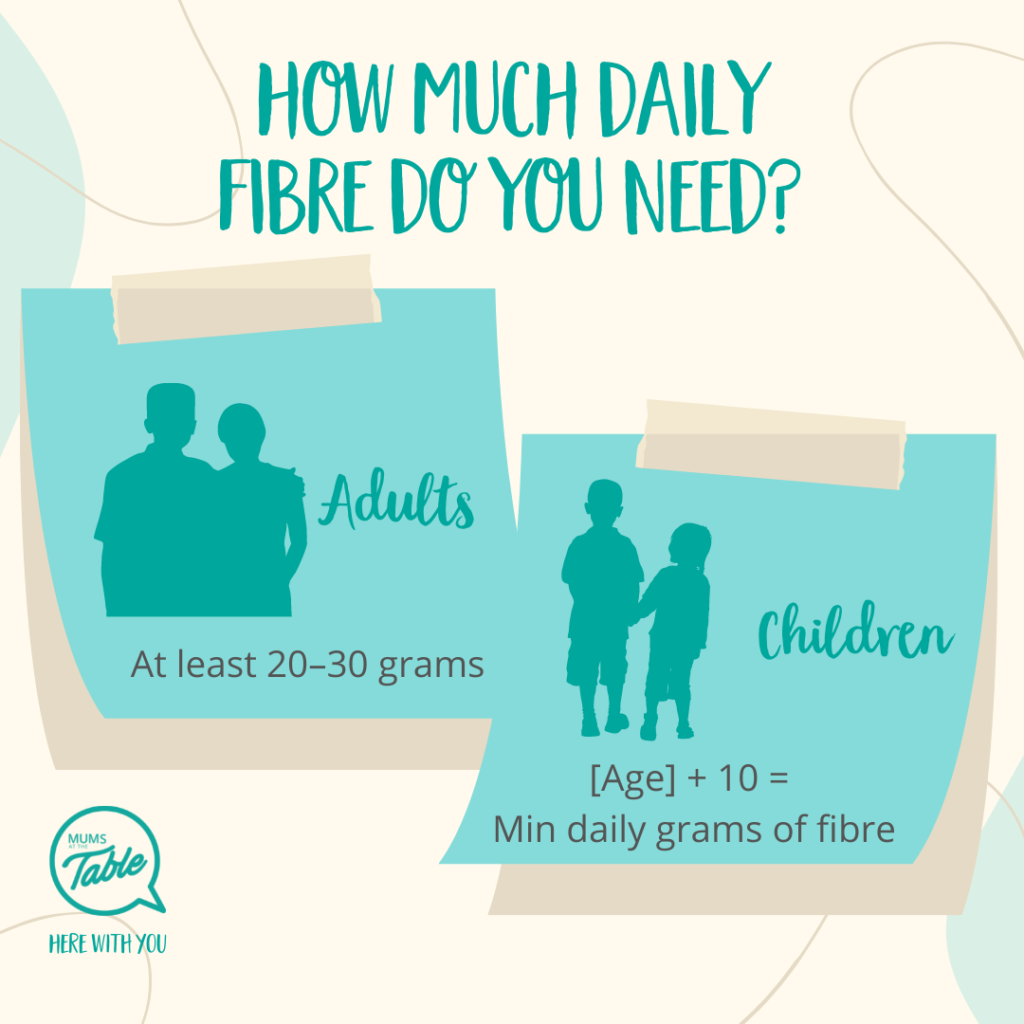You know a high fibre diet is good for you. But how much high fibre foods do you or your children really need each day? We have an easy formula you can follow.
After all, if you or your child has ever had a difficult time in the toilet, the lack of dietary fibre in your diet may be to blame.
It’s not just your bowels that benefit from high fibre foods though. Read on to find out why you should have a good intake of fibre rich foods and how to do so.
In the video below, resident dietitian and nutritionist Marcia Townend explains a bit more about fibre, how to get it, what it looks like and how much we really need.
Health benefits of a diet rich in high fibre foods
Avoiding constipation is just one benefit of having a high fibre diet. Other benefits include:
- Lower cholesterol levels
- Lower risk of heart disease
- Help maintain a healthy weight
- Control blood sugar levels
In general, there are two different types of fibre: Soluble fibre and insoluble fibre.
Soluble fibre forms a gel-like substance in your body. It goes into your colon and is broken down by bacteria. It then travels through your digestive tract, cleaning out your digestive system (read: Less bloating).
Insoluble fibre is what softens your stool, making it easier to pass out of your body (read: No constipation).
How much fibre do you need daily?

Adults need a fibre intake of at least 20–30 grams, but as Marcia says, “The higher, the better.”
For children, take their age and add 5–10. For example, a five-year-old will need 10–15 grams of fibre daily. The same principle applies: Your children will only benefit from more fibre in their diet.
The top 10 high fibre foods
Plant foods are a good source of both soluble and insoluble fibre. This means you don’t need to worry about getting one and not the other if you simply have a variety of fruit and plant foods.
Here are 10 great sources of fibre you can easily incorporate into your daily meals.
- Vegetables and root vegetables
- Fresh fruit
- Wholegrain bread
- High fibre breakfast cereals including wheat bran
- Grains such as brown rice, oats and barley
- Nuts including almonds and macadamias
- Seeds like linseeds and chia seeds
- Legumes including red kidney beans and lentils
- Avocados, which are also filled with healthy fats
- Quinoa
Want ideas on how to include these foods in your meals? Check out our recipes now.
How helpful was this article?
Click on a star to rate it!
3.7 / 5. 3
Be the first to rate this post!
Melody Tan
Related posts
Subscribe
Receive personalised articles from experts and wellness inspiration weekly!


